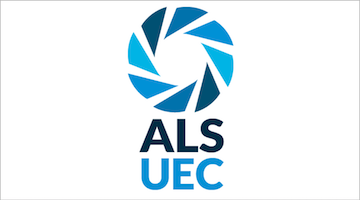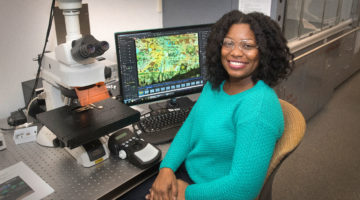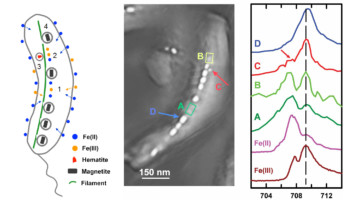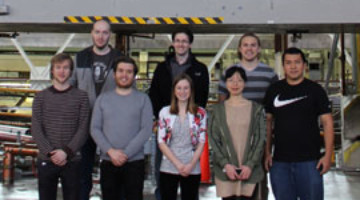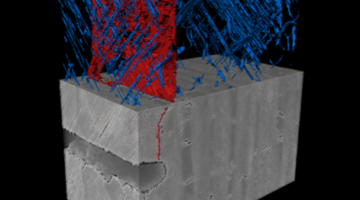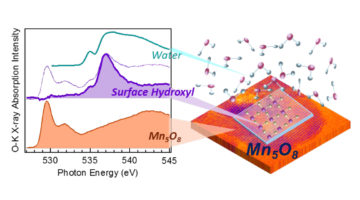The ALS Users’ Executive Committee met in mid-March. Topics of discussion included this year’s User Meeting and possible combined projects with the Molecular Foundry UEC. Users should mark their calendars for the next User Forum, to be held June 1 at 3:30 p.m. User Forums are an opportunity for users to learn about UEC activities and to bring up questions and concerns. Read more »
All News & Updates
Mapping Catalytic Reactions on Single Nanoparticles
A new study confirms that structural defects and jagged surfaces at the edges of platinum and gold nanoparticles are key hot spots for chemical reactivity. The experiments should help researchers customize the structural properties of catalysts to make them more effective in fostering chemical reactions. Read more »![]()
![]()
ARPES Overturns V2O3 Metal-to-Insulator Theory
Researchers report on angle-resolved photoemission spectroscopy (ARPES) measurements performed on the transition-metal oxide V2O3. The results overturn a decade-old theory about metal-to-insulator transitions in this material and provide a spectroscopic benchmark test for future models. Read more »![]()
![]()
NCAA Drives Formation of Designed Proteins
A noncanonical amino-acid (NCAA) complex has been found to drive the self-assembly of a computationally designed protein. Bpy-ala, which is “noncanonical” because it’s not among the 20 amino acids that occur naturally, has useful properties that could be used to generate novel photoactive proteins. Read more »
Grad Student Benefits from ALS, Brookhaven Collaboration
Stony Brook grad student Tiffany Victor flies to California several times a year to use infrared beams at the Advanced Light Source. Unlike the infrared microscope at Brookhaven National Laboratory, the extremely bright infrared light from the ALS’s synchrotron beamlines improves the image quality and resolution in order to study the interface between the plant and fungus. Read more »
Ptychography of a Bacterium’s Inner Compass
Magnetotactic bacteria (MTB) synthesize chains of magnetic nanocrystals (magnetosomes) that interact with the Earth’s magnetic field like an inner compass needle, simplifying their search for optimum environments. Ptychographic spectra of magnetosomes from a marine MTB provides insight into how these inner compasses form. Read more »
Andrea Jones, ALS Proposal Coordinator
Andi Jones joined the ALS User Services Office as proposal coordinator last April and has taken over the processing and tracking of General User, RAPIDD, and Approved Program proposals. She also maintains the ALS publications database and serves as a point of contact for users who have beamtime or proposal questions. Read more »
2016-17 ALS Doctoral Fellows
The ALS Doctoral Fellowship program allows early-career researchers to spend a year in residence at the ALS acquiring hands-on scientific training and developing professional skills to complement their doctoral research. This year’s program is one of the largest groups to date, with 21 fellows. Read more »
GE Aviation Delves into Advanced Materials at the ALS
Developing ceramic matrix composites (CMCs) to replace the metal alloys traditionally used in jet engines has been a goal for the aviation industry for decades. For more than a year, GE Aviation has used the tomography capabilities at ALS Beamline 8.3.2 to gain insight into their CMC materials, guiding their engineering and design efforts. Read more »![]()
For Better Batteries, Open the Voltage Window
Electrochemical (battery) cells with aqueous electrolytes can be safe, inexpensive, and environmentally friendly, but they are limited by a narrow voltage window. X-ray absorption spectroscopy helps explain why an aqueous Na-ion system with Mn5O8 electrodes has a large voltage window and performs comparably to Li-ion batteries. Read more »
- « Previous Page
- 1
- …
- 110
- 111
- 112
- 113
- 114
- …
- 139
- Next Page »
